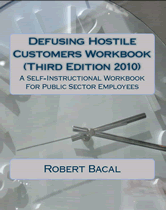
Toxic Organizations - Welcome To The Fire Of An Unhealthy Workplace
Toxic Organizations
We can think of organizations as falling on a continuum. One end is anchored by organizations that function well. In the middle we find the average organization that is effective but could be better. Finally, we have the toxic organization, an organization that is largely ineffective, but is also destructive to its employees and leaders.
What Is A Toxic Organization?
A toxic organization shows two characteristics that distinguish it from healthier workplaces. First, it has a history of poor performance, and poor decision-making. In extreme cases, that poor performance will continue despite personnel changes.
Second, the toxic organization is characterized by very high levels of dissatisfaction and stress that go beyond normal workload issues. The stress and dissatisfaction are a result of very destructive human relations, equivalent to what one finds in dysfunctional families. As a result, toxic organizations can cause long term damage to employees and managers. In some cases this damage can last for years after people leave the toxic organization.
What Does A Toxic Organization Look Like?
Toxic organizations feel and function differently than healthier ones. On a gut level, employees and managers may consistently feel that they are:
- helpless in making things better
- not supported emotionally or professionally
- unable to identify the causes of the discomfort and pain
- unable to leave the situation permanently and unable to solve problems permanently
- consistently under attack
In terms of function and results, toxic organizations also look different. They may have some or all of the following characteristics:
- inability to achieve operational goals and commitments
- problem-solving processes that are driven by fear and rarely yield good decisions
- poor internal communication
- huge amounts of waste that result from poor
- decisions, and lots or rework
- interpersonal relationships are driven by manipulative and self-centered agendas.
In short, a toxic organization creates a high degree of distress, and eliminates any possibility that the organization can accomplish much.
Conditions For Toxicity
Toxic organizations develop when certain conditions occur. First, the toxic organization is most often a relatively small work unit where there is considerable face-to-face interaction amount the work unit members. This is because it is the inter- personal relationships that are at the core of the sick organization. If there is a low level of interaction, it is unlikely that a toxic organization will emerge.
In addition, the toxic organization requires most of the following:
- high interdependence of members
- high number of people who have personal agendas that do not coincide with the needs of the organization
- poor communication
- high identification with the organization as a source of identity
- high degree of external pressure that threatens the jobs of members (*not always present)
Finally, the most important contributor to the toxic organization is the manager or director of the organization. Toxic organizations cannot develop when there is a strong, mentally healthy leader.
The "Toxic Leader"
For every toxic organization, there is a toxic leader, a leader who, by virtue of his or her own problems, creates an environment that drives people crazy. Toxic leaders are much like poor parents, in that they exhibit certain behavior patterns that confuse and paralyze others who depend on them.
Emotionally, toxic managers tend to be very cold and distant, or overly reactive and emotional. In both cases they behave this way because they lack the emotional maturity to deal with others in a constructive, supportive way. Often you will find that a toxic manager may swing from one emotional extreme to another, in unpredictable ways.
The toxic manager is also inconsistent. He or she says one thing and behaves differently. Behavior and words don't match. Decisions and direction can change suddenly and without apparent rationale. At the core of the toxic manager is the sending of mixed messages so that employees never know what is expected, or what will be punished.
The toxic manager is, usually an avoider. He or she avoids situations that may be emotionally charged, such as conflict, or discipline, and reacts poorly to being challenged. Or, the toxic manager avoids decision making until crises develop.
In short, the toxic manager confuses subordinates, uses very subtle ways of punishment for real or imagined transgressions, creates a high degree of dependence, and is internally conflicted.
The Underlying Problem
Having made some comments about the role of the leader in a toxic organization, we also need to understand that the leader is also helpless. Captive to his or her own emotional problems, there is an inability to recognize the problem, or in fact, to understand what is happening. Most often, the toxic manager does not realize how bad things are, and is also confused and extremely distressed. In a sense the toxic manager is also a victim.
This unawareness is the major block towards turning a toxic organization around. In fact, a toxic leader may read this article
and see no relevance to his or her situation. Because of this, in extreme situations, there is no hope of turning a toxic organization around while the toxic leader remains. However, it is still possible, in less extreme cases, for toxic leaders to break the toxic cycle provided they are willing to look at their own health and behavior very carefully.
Conclusion
We have discussed the toxic organization, and the role of the toxic leader. If you are a manager we suggest that if you find that there are some indications that your organization may be becoming toxic, we urge you to look at yourself in an honest way. Remember that toxic organizations destroy people, and that if you are developing a tendency towards toxic leadership, that you will pay a huge price in terms of personal health, and your career.





